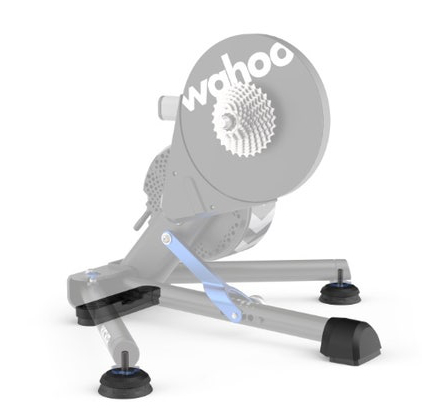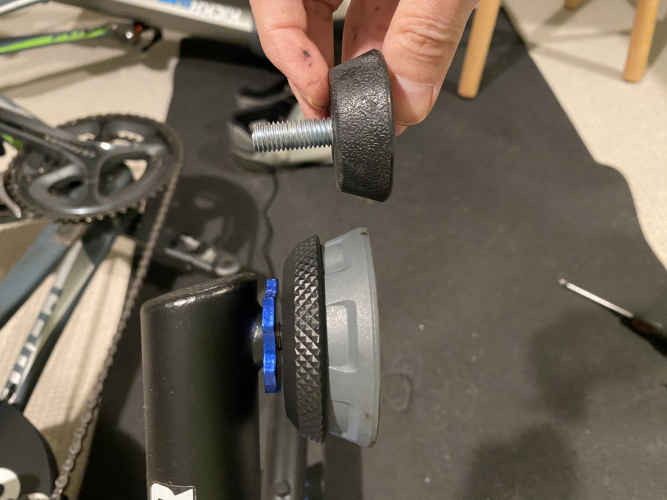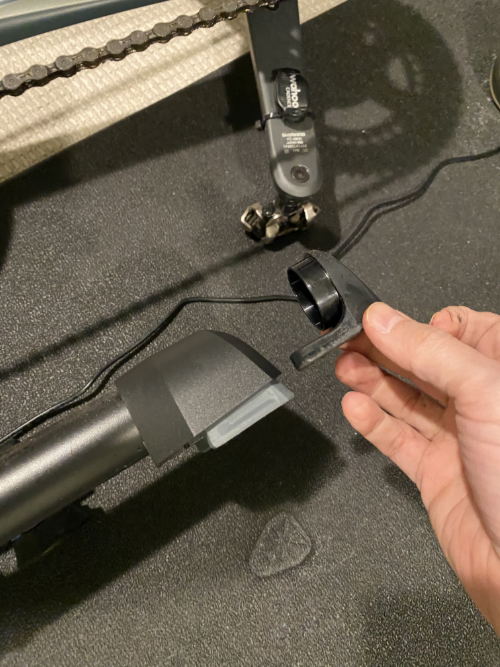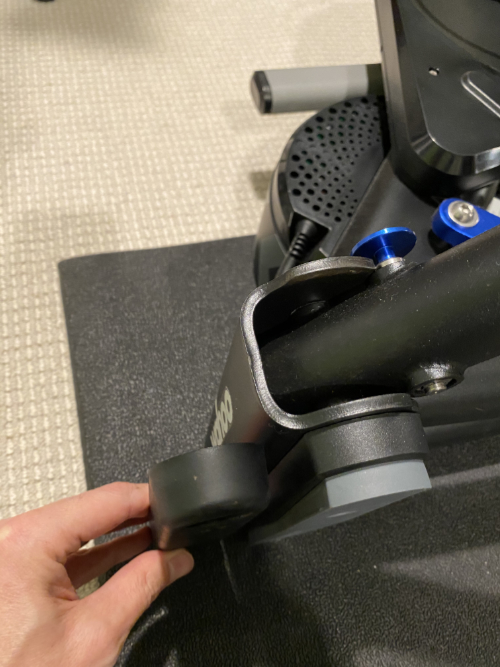If you’re a Zwifter, chances are that you’re running (or wish you were running) the Wahoo Kickr smart trainer. The Kickr, which is now in its fifth generation, may not be the absolute best trainer out there, but it is the established leader in the space, and when you’re dealing with a system such as Zwift that has components from so many different manufacturers involved, there is safety in numbers.

Competitors are always trying to find an edge, of course, and some of those competitors started to explore bikes that lean, something the Kickr does not do. Saris introduced the MP1 Nfinity Trainer platform, a $1200 boogie board for your bike, which I am going to try out as soon as $1200 doesn’t seem like a ton of money to me. (Attention Saris: I’m an influencer! Send me one of these!) Manufacturers like RealRyder and Bowflex have bikes that lean (though, notably, Wahoo’s own $3500 Kickr Bike doesn’t), and although those machines aren’t direct competitors to Wahoo’s Kickr, you have to imagine that all of these cycling products will converge over time and that market share matters.
I don’t have any insider information, but it certainly seems to me that Wahoo felt the need to respond to this trend, and their response comes in the form of AXIS Action Feet, a product whose very name seems like a desperate bid to generate excitement.
What are the Kickr AXIS Action Feet?

The AXIS Action Feet are standard issue for the new Wahoo Kickr devices, and available as a retrofit for older models, at a not-insignificant price of about $80. Still, after one spends a couple grand on a bike and at least a thousand dollars for a Kickr setup, an additional eighty bucks might seem like a trivial amount to pay for an improvement in the experience. Still, eighty dollars is eighty dollars.
The AXIS Action Feet (I’ll just call them “Feet” with a capital “F” from now on) is a replacement set of feet for the Wahoo Kickr.
installing the Kickr AXIS Action Feet
Installation of the Feet is very simple, and can even be done without removing the bike from the trainer, if you’re lazy. Just push one of the Kickr arms back to the center and lay the whole assembly on its side. You might get a bit of grease on your fingers but it’s not a dirty job.
The front and back replacement feet require a Phillips screwdriver. The side Feet just screw in. The blue aluminum retainer is a stock piece and you can just swap them over to the new feet. Installation is a ten minute job, and there is very low risk of damaging anything or injuring yourself, as long as you’re careful.
The difference between Action Feet and the stock feet

Two of the feet are along the centerline of the bike and are basically needed only because the other two feet, the ones that are attached to the arms, are taller requiring the centerline feet to be taller as well. So, the forward and aft centerline feet aren’t very remarkable, they’re just slightly beefier versions of the stock feet.
The only Feet in a position to make any difference (literally and figuratively) are the two Feet attached to the stabilizing arms of the Kickr. These replacement Feet are, as you can see from the photo above, considerably beefier than the ones they replace. They are also bigger in surface area, so they will perhaps help a bit in keeping your Kickr from sinking into the carpet or your mat. As with the stock feet, you can height-adjust the two “side Feet” to level the bike.
Do the Wahoo Kickr AXIS Action Feet make a difference?
Answer: No.
Oops. That’s far too short an answer considering I’m making a whole blog post out of this topic, so I’d better elaborate, and maybe provide some caveats.
I’ll start with the caveats. One is that I didn’t perceive a noticeable difference, and that doesn’t mean you won’t. Second, my bike is on top of a thin mat which itself is on top of a reasonably thick carpet. I think that if the bike were directly on a cement slab, then maybe I’d have a better chance of detecting a difference. As it is, I really don’t think I can tell the difference.

The Action Feet ride experience
As I said, in my experience, the experience of riding with the Feet isn’t noticeably different from the experience of riding with the stock feet, but I don’t know if altering the feet of the Kickr ever really had a chance of success. The front of the bike is not anchored at all, of course, so when I am really mashing the pedals for a stiff uphill (which is where I think one would see the most side-to-side stress), the sensation of having the front of the bike relatively free and the back of the bike much more rigidly fixed is very unnatural. It’s not as though Wahoo could have made this product much better and didn’t, this type of trainer architecture just seems to have this limitation that the back end of the bike is sort of anchored to the floor while the front is free to move, and I don’t see how one can really get around that.
Unless you have the Saris trainer platform, maybe. That thing seems prohibitively expensive to me, but it’s very existence suggests that the engineers over at Saris recognize this problem with the trainer architecture and are betting company R&D money that the best way to fix it is to put the entire assembly on top of a movable platform.
The Saris training platform retails for $1,200. If you save money by not buying the Kickr AXIS Action Feet, then that cost is a mere $1,120, which still feels a lot like twelve hundred dollars.

So do you think the Saris Training Platform is worth the investment?
At over $1,000, I don’t think I can afford to find out! I do definitely think that having your bike locked down and unable to sway naturally takes away from the indoor-bike experience. I did a century with my Wahoo Kickr and I really noticed how fatiguing it was that the bike had no “give”. So I think they’re onto something with the training platform, but whether it really improves the experience I can’t say. But hey, if you get one how’d you like to write a guest post for this blog?
I wonder why Wahoo even bothered to release this product.
One would think that their in-house testers would have noticed that it doesn’t change anything.
Maybe they just used some sort of high-tech digital devices to measure the movement, and said “Yep..It’s rocking now, pack ’em up and start selling them!”, without actually riding it side by side with the old ones.
I see that they have a new Kick’r out now that slides forward and back (absorbs your pedalling effort that really ought to all go to the drivetrain), and retails for an arm, a leg, and your first-born child.